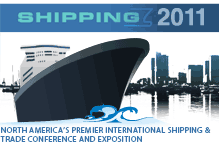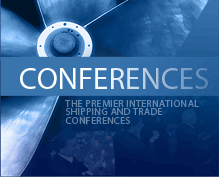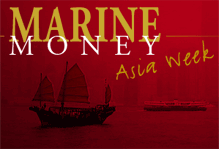
Prospects for the Panamax Class of 2001
By Matt McCleery
With opportunistic shipowners flocking back to Asian shipyards to place orders for bulk carriers, we thought it a good time to pause and do some math. Now we like “instinct” and “cheap Yen” and “historically attractive prices” as much as the next guy, but we thought it would be interesting to see if these ships are so attractive that they could financed in the capital markets, or by non-shipping providers of capital.
In this article, we’re going to take a look at the panamax market because its rates and values are considered by many to be the bellwether of the dry cargo industry. According to Clarkson, these workhorses carry about 30% of all dry bulk cargoes, the majority of which consist of iron ore, grain and coal. Specifically, with more than 10% of the fleet delivered in 2001, we thought it would be interesting to take a look at the whopping $2.4 billion “Panamax Class of 2001″ and analyze the daily cash break-even for their first five years in service. Like most of the articles in Marine Money, the charts and graphs pretty much speak for themselves. For this exercise, we’ve assumed that ship contracts were executed on conventional payment terms and that they were either dollar denominated or swapped into the dollars upon delivery. Daily operating expenses are our own estimates of the average costs throughout the first five years. We also include accrual for dry docking expenses.
We’re conservative by nature; to come up with our cash break-even figures, we’ve assumed that debt on the ships is amortized in straight-line fashion over 15 years to a balloon based on a scrap value of $130 per lightweight ton. We also assumed a blended capital cost of 9% of all capital employed (ie 100% of the newbuilding cost) over 15 years. While short-term LIBOR may be low at the present time, we do not factor in cheap interest rates since they can’t be swapped at these levels and because they won’t stay at current level throughout the course of a financing. As one investor friend of ours said “the entire shipping industry is a few interest rate ticks away from disaster; the only money being made today comes from cheap floating rate debt. If one year LIBOR goes to 5%, banks and owners are dead meat.” Nonetheless, it is worth noting that today’s cash break-even rates are actually lower than those that appear in our big charts.
Tsakos Priced
By Urs Dür and Matt McCleery
Before we oil-up the HP and get into the math, we’d just like to say up front that the role of Marine Money is a complicated one because shipowners, investors and financiers all rely on us, yet their interests are often mutually exclusive. Unlike a typical sell-side analyst report, we have to use three distinct perspectives when conducting our analysis. That means that in the perfect world, we would probably write four short articles on TEN and every other deal; what it means to the Tsakos family, what it means to JP Morgan and Jefferies and the other underwriters, what it means to the investors – and of course what the sum of these three things mean to the marketplace as whole. The following analysis is focused on what we think investors should look for when investing in tanker offerings, but we’ll start off by telling you what Marine Money thinks this transaction means for the issuer and underwriters. Unlike most articles in Marine Money, we won’t divulge our overall conclusion until the end. Continue Reading
LNG PROJECT FINANCING: The Shikemusen of the 21st Century
By Matt McCleery
Leave it to shipping to be different; just as the accounting world governed by Federal Accounting Standards Board (FASB) is calling for debt to be consolidated onto balance sheets, the shipping industry is finally figuring out how to move it off balance sheets through project financing structures. Historically, in the world of ship finance, the term “project finance” was usually used as a euphemism for doing a deal with other people’s money. Even the term “project” is more often than not a subtle reference to the fact that the sponsor won’t provide any recourse or corporate guarantees.
Of course, this is an exaggeration. After all, we’ve seen tanker owners like Torm and Frontline tap the German KG market to increase liquidity and beef- up earnings per share. We’ve also seen companies such as International Shipholding, dubbed by one banker as “the next MC Shipping,” basically exist with the raison d’etre of arranging project financing. But thanks to the development of LNG shipping, project financing will play a greater role going forward.
HOW CAN SHIPOWNERS GET HEDGE FUND CAPITAL?
By Urs M. Dür
As a postscript to Mr. Uttmark’s hedge fund article and how they work we decided to try to talk to a few hedge funds and identify why they like or disliked shipping as an investment. Obviously, although we gave it the college try, hedge funds that were not involved in shipping did not care to even take our calls. These are the same types of people who do not realize that 90% of world trade, in terms of tonnage, moves by ship… they are not bad people but they are not visually measuring the containers laid-up in Elizabeth, NJ when they drive to Wall Street each morning to get an essence of the market either. Are they missing out?
The hedge funds we are familiar with, for the most part, spoke to us and while keeping things close to the chest, of course, the general motivation for all hedge funds was strikingly similar.
NOBLE GROUP: DEFINITIVE DYNAMISM
By Urs M. Dür
Noble: Dollars and Sense
| USD’000 | June 30 2001 | 30-Jun-00 |
| Turnover | $887,216 | $580,694 |
| Pretax Operating Profit | $17,756 | $13,046 |
| TaxExpense | $ (2,668) | $(1,728) |
| Net Profit | $15,088 | $11,318 |
| EPS (USD cents) | $5.5 | $4.0 |
| Shareholders equity | $117,792 | $105,173 |
| Basic Share Performance | June 30 2001 | 30-Jun-00 |
| Shareprice (USD cents) | $0.67 | $0.31 |
| PE | 6.09 | 3.88 |
| Volume | 245000 | 75000 |
| 12 Month High | $0.76 | |
| 12 Month Low | $0.35 | |
| Share Price Today | $0.54 | |
| PE | 4.91 | |
| Volume | 267000 | |
No matter what one thinks of it, the first thing one notices when one walks into the office of Richard Elman – 61, Chairman (holding a 51% stake in the company) of the Hong Kong based, Singapore listed, Noble Group, a leading industrial, agricultural, transport and logistics provider in Asia – is the artwork on the walls. Especially as the popular press likes to point out that he had a short stint as a hippie in San Francisco in 1969, most striking is a large painting of Herbert von Karajan, the superlative late conductor of the Berlin Philharmonic, placed, if I recall correctly, behind the chairman’s desk. In one of his famous poses, Karajan is head slumped in deep thought reminiscent of Rodin’s “Thinker.” Karajan was noted for his precision, innovative interpretation, disdain for sloppiness and competitiveness. Rivaled in fame only by Leonard Bernstein during his tenure, he remained unique and independent: Bernstein had Tanglewood, but Karajan had Salzburg – and his Porsche.
Now a man’s choice of art does not necessarily indicate his full range of qualities. However, if one is familiar with Karajan, then one is familiar with the values noted above and they are displayed in the dynamism and performance of the Noble Group.
The Noble Group (Singapore: NOBL) is a diversified company. In a global operation with over 600 employees it supplies industry with the raw materials (sugar, steel, etc), trades those commodities and transports those resources to the customer via a fairly vertical operation. It reminds one of a small Cargill. One will note from the extensive list of companies (see Corporate Facts page 23) they operate and the relatively small number of employees that there must be close interaction between the teams. So while the company could be construed as having a lack of focus to the layman, it does act as one.
SOME BEST BETS, 2002
By Matt McCleery and Urs M. Dür
You, an innocent banker/investor/owner/ broker, are the victim of a sneak attack. It goes like this. You’re just sitting at your desk, surfing email and thinking about what you’re going to do for the weekend when the telephone lets out a hopeful electronic pulse. Maybe, just maybe, you think as you pick up the receiver, it’s your only almost-investment grade client calling to ask you to arrange a jillion dollar, generously over-secured facility to effect some wildly accretive acquisition that will earn you the Marine Money Deal of Year Award and ensure a colossal bonus and decadent skiing vacation in Chamonix.
“Hello,” you say, most likely in some other language as butterflies flutter by in your stomach. “Matt McCleery, Marine Money,” I say. Before you have a chance to exhale, I continue with “if you had a gun to your head and the attacker demanded to know money can be made in ship finance in the eleven months that remain in 2002, what would you say?”
And then there is silence because, after all, you can’t think of anything to say off the top of your head. In fact, as a banker, you’ve been trained never to say anything at all to members of the press corps. As you stare vacantly into the Outlook screen, an email message comes in from Hugin announcing Frontline has bought back their daily helping of shares.
BLUEWATER HIGH YIELD: THE NEXT BIG THING?
By Urs M. Dür
In recent years High Yield in marine finance has not had a good reputation. This is not because that the idea of the instrument is a bad one, but that the idea was often matched with projects and business plans not well suited for the instrument. The Enterprises, Holt, Millennium, Global Ocean and Golden Ocean debacles all had positive and negative aspects to them from their starts in the late 1990′s and both the investors and the companies alike ended up in messy situations in the end. Since then, the door has been shut on marine, and shipping specific, High Yield issues.
That’s why when, back in December, we heard about Bluewater Finance Ltd (Bluewater) coming to market in January with a possible $200m bond offering, we anticipated the red herring with baited breath. Would it be any different this time? Our initial thoughts were, possibly, yes. The main difference is that Bluewater is not a shipping company, per se. It is a designer, developer, and owner of FPSO’s (five under contract, three owned) and multiple SPMs whose major clients include long-term relationships with oil majors (See “Guts of the Deal”). It is also interesting for the tanker market because Bluewater potentially is a consumer of second-hand VLCCs and more FPSO operations can mean more tanker trips.
HEDGE FUNDS – TAKE TWO
By Geoff Uttmark
“Get wealth when you have it not; Guard what you have got; Increase what you have guarded; And Bestow upon worthy persons What you have increased.” Panchatantra (c. 5th century)
The spot-on quote can make a journalist’s dayand indeed, his story, especially if it comes from an indisputable or ancient authority. But what writer doesn’t live to be first to spot the dwarf star soon to be a giant. That said, this article builds upon Matt McCleery’s observation in last month’s Marine Money, ” Another compelling source of capital for shipping, both debt and equity, in the United Sates in 2002 will be hedge funds.” (MM Vol. 18, No. 1). Self-serving say some to quote the family? In his oft-spoken refrain of simply “Follow the liquidity,” Matt McCleery has been right first consistently from shipping high yield bonds to IPOs and now to hedge funds. And not only in recognizing the instrument, but also in defining what is required to access it. So if hedge funds are where the liquidity trail and hence, the course of ship finance, are next headed, owners should know more about them since they are among the most inscrutable finance instruments used today.
Coming to America
Leverage is an important ingredient in the stew of ship finance. In a bubbling cauldron of big-ticket assets, thin operating margins and meager long-term returns, debt financing is the spice that makes the meal tasty for risk seeking equity. While commercial banks have historically been a reliable source of competitively priced secured capital, The Bank for International Settlements’ (BIS) revised rules for the calculation of risk by commercial banks, and the adequacy of capital that must be allocated to fund that risk, appear set to tighten the market.
The BIS regulations aren’t the only factor at work; ship finance liquidity is also being reduced by an inability of Japanese and Korean banks to lend, reduced tax advantages, non-existent export credits, limited longterm employment and erratic newbuilding prices. Oh, and did we forget to mention that over time many shipping assets classes fail to earn their cost of capital? As a result, the question that we are asked more and more frequently is this – where will ship finance leverage come from in the future? We draw our answer from an aphorism uttered by JP Morgan: “money changes direction like a school of fish.”
It’s a New Year, Baby! So Be Creative!
January 2002 has brought a suspenseful beginning. This is largely because since the beginning of December, very little has occurred. (Of course between the writing of this and the issue being delivered, something huge will occur. It always seems to work that way.) Other than the ACLN mess, the Carnival/P&O/RCCL fight, a couple of KGs buying tankers, and Stolt rumored to be doing an $85m sale leaseback with DnB for 5 years on 12 old vessels, there has been little news. Compounding last month’s quiet was the uncertainty and halting nature created by September 11th. Yes markets have receded and then rebounded in both shipping and equities, but it feels as if little has happened, likely since we have all been preoccupied since “the event”.
On the cover of the magazine and pictured here is Geoff Uttmark’s, our Director of Equity Research, new boy, named Declyn. OK, we know one may ask, what the heck is a Declyn? Well the entomology of the name is fivefold. For the “Dec” portion of the name, the “Dec” represents the month of birth (December), the DECade of marriage that produced the baby and the Thai word for baby, as the mother is Thai, “dec”. The “Lyn” portion of the name represents the place of birth, BrookLYN, New York and it’s a tribute to the city in this difficult year as well. Now whether one likes the name, we certainly do, or not is neither here nor there: At the very worst the name shows creativity. 2002 is going to take a lot of creativity to stay ahead, or to just keep one’s head above water. The purpose of the January 2002 Marine Money is to cover some aspects of the ship finance world that will pose specific issues over the year and how one may be able to profit from approaching the various scenarios adequately.







